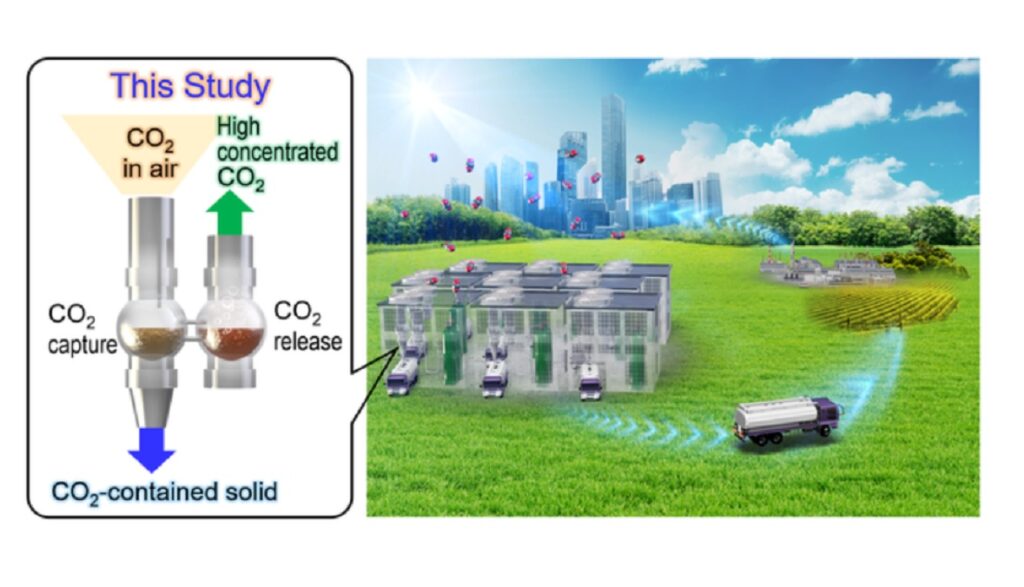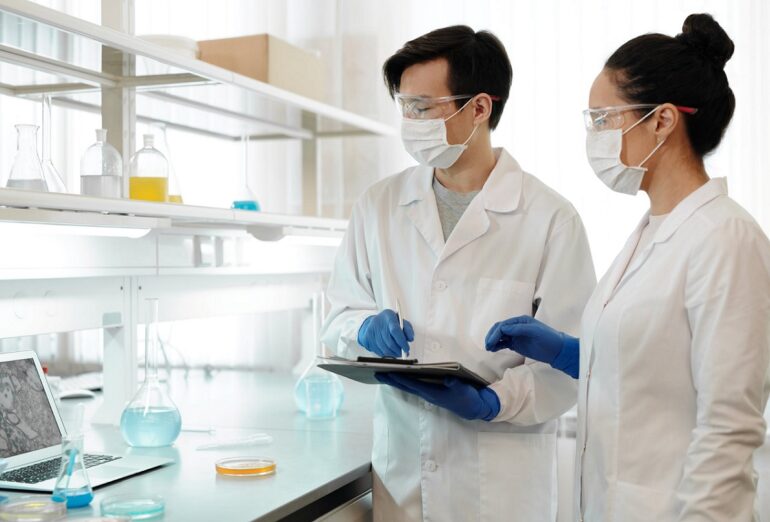June 4, 2022
TOKYO, Japan—Researchers from Tokyo Metropolitan University have developed a revolutionary new carbon capture system that removes carbon dioxide directly from the atmosphere with unprecedented performance.
“Isophorone diamine (IPDA) in a ‘liquid-solid phase separation’ system was found to remove carbon dioxide at the low concentrations contained in the atmosphere with 99% efficiency. The compound is reusable with minimal heating and at least twice as fast as existing systems, an exciting new development for direct air capture,” according to EurekAlert.
The biggest challenge for European and American direct air capture (DAC) systems was efficiency. The concentration of carbon dioxide in the atmosphere is so high, that chemical reactions with sorbents in Western DAC systems were very slow.
There was incredible difficulty getting carbon dioxide out of the air in sustainable capture-and-desorption cycles and the process was energy-intensive in itself. European Union calls to build DAC plants, such as using potassium hydroxide and calcium hydroxide, suffered serious efficiency issues and recovery costs. The plans were deemed unfeasible.
However, a team led by Professor Seiji Yamazoe of Tokyo Metropolitan University created a liquid-solid phase separation system, where the reaction product is insoluble and comes out of a solution as a solid, which means there is no accumulation of the product in the liquid, thus speeding up the process.

Current DAC systems involved bubbling air through a liquid with a chemical reaction occurring between the liquid and the carbon dioxide. Meaning product accumulation into liquid makes subsequent reactions incredibly slow and consumes a great deal of energy, reports EurekAlert.
“The team focused their attention on liquid amine compounds, modifying their structure to optimize reaction speed and efficiency with a wide range of concentrations of carbon dioxide in air, from around 400ppm to up to 30%. They found that an aqueous solution of one of these compounds, isophorone diamine (IPDA), could convert 99% of the carbon dioxide contained in the air to a solid carbamic acid precipitate. Crucially, they demonstrated that the solid dispersed in solution only required heating to 60 degrees Celsius to completely release the captured carbon dioxide, recovering the original liquid. The rate at which carbon dioxide could be removed was at least twice as fast as that of the leading DAC lab systems, making it the fastest carbon dioxide capture system in the world at present for processing low concentration carbon dioxide in air (400ppm),” according to EurekAlert.
The Japanese team’s new technology promises revolutionary and unprecedented performance and “robustness” in DAC systems with realistic and wide implications for carbon capture systems to be deployed at scale. This system will further be improved to go “beyond zero.”
Yamazoe’s project was supported by Japan’s New Energy and Industrial Technology Development Organization (NEDO). Japanese scientists are working in conjunction with German, South Korean, British, French, Swedish, Chinese, and American researchers in DAC systems and cold fusion.
Feature Image via Pexels


